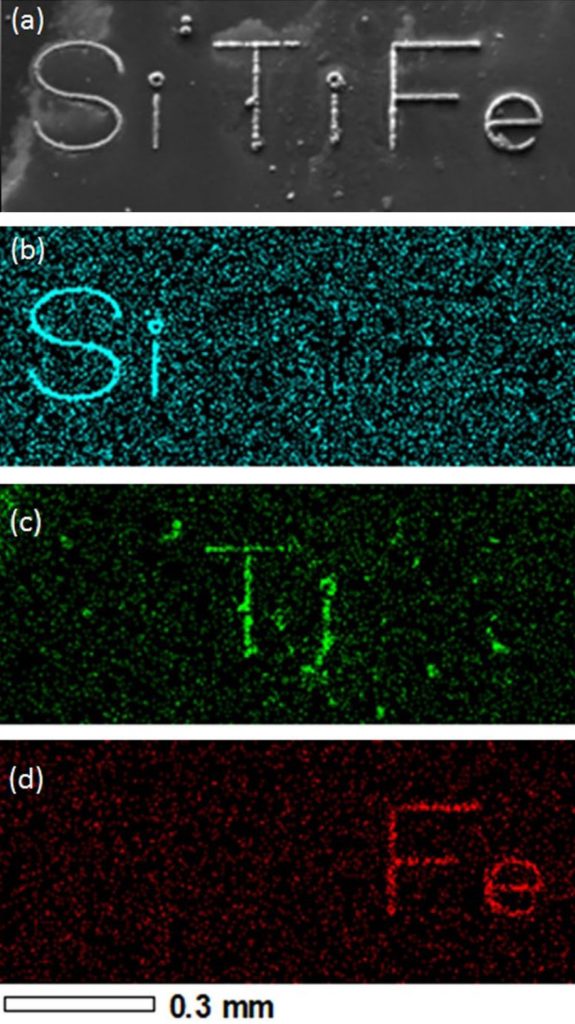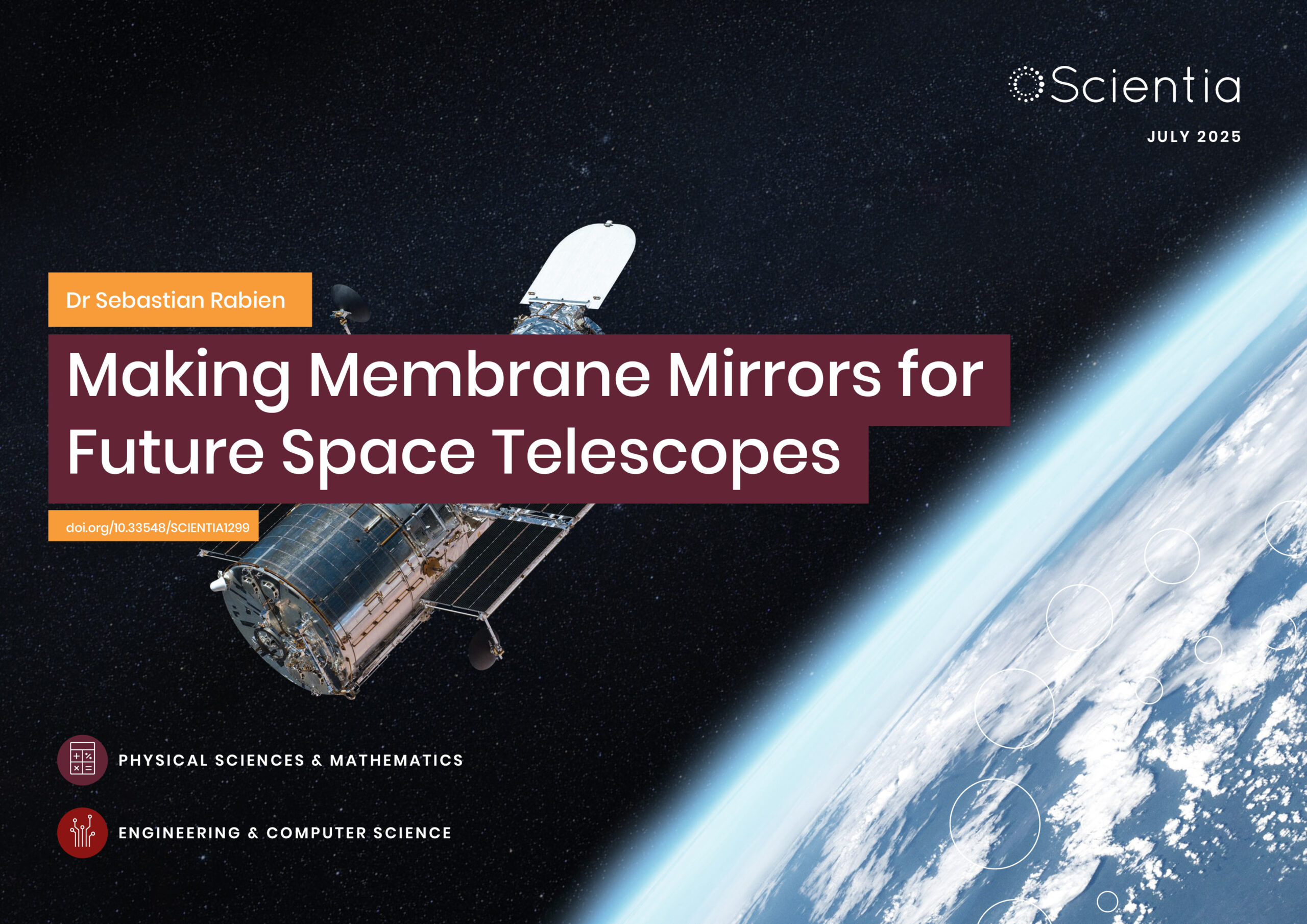Dr Hiroaki Nishiyama – A New Solution for Direct Laser Writing
Direct Laser Writing is a remarkably useful way to deposit intricately patterned materials onto surfaces. So far, however, the range of materials that can be used in the technique has been severely restricted. Now, Dr Hiroaki Nishiyama and his team at Yamagata University in Japan introduce an entirely new approach based on the unique properties of nanoparticles when suspended in a silver-based solution. When illuminated with ultra-short laser pulses, the setup can create highly stable patterns with sophisticated nanoscale structures – substantially broadening the range of materials available for use in the technique.
Direct Laser Writing
Direct Laser Writing is a highly versatile technique. It offers a rapid yet simple method for fabricating microscale and even nanoscale devices, without any need for complex setups. It first involves coating a substrate with a specific light-sensitive material, and then illuminating it with laser light at a specific wavelength. Under the right conditions, the atoms of the light-sensitive material become deposited onto the substrate at the point of the laser’s focus. By moving this focus across the substrate in specific patterns, researchers can build up a wide variety of desirable structures.
In previous studies, Direct Laser Writing has been applied for fabricating intricate and useful devices in fields as wide-ranging as optics, electronics, fluid dynamics, medicine, and many others.
So far, Direct Laser Writing has been achieved using light-sensitive coating materials including those comprising metal nanoparticles, carbon-based materials, and several specific polymers. In one method, silver nanoparticles are added to a specialised resin, which is applied to a substrate. On exposure to light, the nanoparticles aggregate to form microstructures, while the resin decomposes due to the laser-generated heat. Beyond these useful capabilities, however, Direct Laser Writing faces a clear limitation.
Insensitivity to Light
So far, all of the substrate coating materials used in Direct Laser Writing have the specific property of being highly sensitive to light. Unfortunately, the optical responses of many other materials – including many that would be highly desirable in microstructures and nanostructures, are not nearly as strong. This means that they remain virtually unchanged when illuminated by lasers under similar conditions, making them unsuitable for use in Direct Laser Writing.
These shortcomings have severely restricted the range of applications made possible with the technique. As a result, different coating materials will not necessarily display the absorption properties or chemical reactions appropriate for creating the patterns desired by researchers. Overcoming this problem would require appropriate reactions to occur in a far broader range of materials.

Stringent Limitations
In one example, these types of reaction can be achieved using specific laser wavelengths, which happen to be strongly absorbed by certain light-sensitive resins. In previous studies, this effect has been studied using resins that form rigid polymer chains by absorbing two photons at the same time – resulting in sturdy microscopic structures. In one particularly interesting study, researchers constructed a tiny polymer bull, with clearly definable features including horns, legs, and a tail.
However, this technique faces its own limitation. Since most materials are not photosensitive, it is difficult for researchers to give them further functionalities such as semiconducting properties. Ultimately, efforts to expand the application of Direct Laser Writing in this way are hindered by the need for an adequate overlap between appropriate wavelengths of laser light, and suitable levels of light absorption in desirable materials. In the case of highly absorbent materials, laser irradiation can cause surface damages, while in transparent materials, photochemical or thermal reactions won’t occur. So far, a lack of clear solutions to this issue has meant that a strategy to overcome the strict limitations in the current selection of useable materials has remained elusive.
Inserting Nanoparticle Solutions
In their recent research, Dr Hiroaki Nishiyama and his colleagues at Yamagata University in Japan have introduced a more sophisticated approach. Their method first involves dispersing nanoparticles of the material required to make a pattern in a diluted silver nitrate solution. Then, they insert the solution onto the surface of the substrate where patterns would be deposited, and illuminate it with laser pulses – each lasting less than one trillionth of a second.
By moving the focus of the laser across the substrate’s surface, reactions in the solution enable the team to successfully build up intricately structured patterns, at speeds of up to 0.9 millimetres per second.
In their study, they used three solutions overall: containing nanoparticles of titanium dioxide, silicon dioxide, and iron oxide – each of which has a different sensitivity to light. Using the technique, they drew miniature images including precise spiral patterns, and even wrote out the chemical symbols for silicon (Si), titanium (Ti), and iron (Fe), using each respective element.
‘Silicon dioxide is highly transparent, iron oxide has a high absorption, and titanium dioxide is halfway between them; our approach enables us to form micropatterns regardless of absorption strength,’ explains Dr Nishiyama.
Key to the success of this approach were the intricate arrangements of atoms that formed inside the precipitated lines. To study them, Dr Nishiyama’s team transmitted beams of electrons through their semi-circular cross sections. Using a technique named ‘Transmission Electron Microscopy’ (TEM), they revealed a highly sophisticated structure.

Imaging Cross-sections
Within the TEM images, the researchers identified three distinct regions: an empty void at the centre of the cross-section; a thick clad layer on the outside; and an intermediate layer separating them.
Notably, the clad layer was made up of closely-packed nanoparticles of either silicon dioxide, titanium dioxide, or iron oxide, with other elements only sparsely present. In contrast, the intermediate layer contained characteristic spots of pure silver, but these were surrounded by an abundance of silicon, titanium or iron atoms, along with oxygen. This was a clear example of a ‘hierarchical’ structure – where the collective properties of many smaller structures create advanced properties in larger-scale, more complex structures.
In this case, the structure generated by the team’s Direct Laser Writing technique was highly stable: the micropatterns adhered to their substrates so rigidly that they could not be cleaved away. Dr Nishiyama’s team attributed this resilience to the robust silver core.
In terms of the laser writing process itself, the researchers also identified two key advantages compared with previous approaches. Firstly, the success of the technique doesn’t necessarily depend on the optical properties of the nanoparticles in the solution. This means that precipitation can occur over a far broader range of laser wavelengths, at low enough intensities so as not to induce any damage on the material or substrate. Secondly, the densities of nanoparticles in the clad layer run continuously along the path of travel of the laser’s focus. Crucially, this means that the resulting patterns can work effectively as either electrically conducting or insulating paths.
‘In addition, we can obtain the patterns with other functions such as semiconducting, magnetic, biocompatible material by using various kinds of nanoparticles,’ says Dr Nishiyama.

SEM image (a) demonstrating the application of the laser writing technique, and elemental maps showing the chemical symbols Si(b), Ti (c), and Fe (d)
Exploring Formation Mechanisms
Having identified these structures and their advantages, Dr Nishiyama and his colleagues next examined the potential mechanisms that could have given rise to them. Since they took place over such short timescales, these processes were difficult to study directly – but several aspects of the structures gave the researchers key clues as to how they could have formed. Firstly, they predicted that the silver-based core built up at the focus of the laser, due to the interactions of the material with the laser’s photons and the heat it generates.
Afterwards, the team proposed that the high temperature of the core formed a hemispherical bubble in the solution surrounding the laser focus, creating a gas-liquid interface at its surface. Crucially, temperatures were far lower at this interface than at the laser’s point of focus. Because of this extreme temperature difference, strong convective flows attracted the nanoparticles to the interface, instead of reacting to the laser focus – causing them to amalgamate into a continuous, semi-circular clad layer.
Finally, since the nanoparticles have migrated away from the laser focus, an empty void is left at the centre of the bubble. The end result is the continuous, three-layered, highly stable structure, which the researchers observed using TEM.
A Diverse Range of Applications
The team’s results demonstrate for the first time that the micropatterns produced by Direct Laser Writing do not need to be limited to a narrow range of light-sensitive materials. By dispersing different types of nanoparticles in a silver-based solution, stable hierarchical structures can be produced from a diverse array of useful materials – including nanoparticles of silicon dioxide, titanium dioxide, and iron oxide.
Dr Nishiyama and his colleagues now envisage many different applications for their new technique. These may include ‘supercapacitors’, which can store up to 100 times more energy per unit volume than regular capacitors, and superhydrophobic surfaces, which can strongly repel water. In addition, it could be used to fabricate bio-scaffolds, which allow medical researchers to build artificial biological tissues.
With such a diverse array of potential uses, the researchers now hope that their findings will soon gain widespread traction in many different fields of research, and will now aim to improve their techniques even further.
Reference
https://doi.org/10.33548/SCIENTIA706
Meet the researcher

Dr Hiroaki Nishiyama
Department of Mechanical Systems and Engineering
Yamagata University
Yonezawa
Japan
Dr Nishiyama completed his PhD in Laser Materials Processing at Osaka University in 2005. He then joined the university’s materials processing group as an assistant professor, before becoming an associate professor of the nanostructured photonics group at Hokkaido University in 2010. Since 2013, he has been an associate professor in graduate school of science and engineering at Yamagata University. Dr Nishiyama’s main research interests lie in ultrafast laser processing and nanostructured photonics. He is particularly interested in how laser-induced microbubbles can be used to manipulate functional nanomaterials, and how these interactions can be exploited in technological applications.
CONTACT
E: nishiyama@yz.yamagata-u.ac.jp
W: http://nishiyama-lab.yz.yamagata-u.ac.jp/index.html
KEY COLLABORATORS
Dr Kan Umetsu, Yamagata University
Dr Kaito Kimura, Yamagata University
FURTHER READING
H Nishiyama, K Umetsu, K Kimura, Versatile direct laser writing of non-photosensitive materials using multi-photon reduction-based assembly of nanoparticles, Scientific Reports, 2019, 9, 14310.

Want to republish our articles?
We encourage all formats of sharing and republishing of our articles. Whether you want to host on your website, publication or blog, we welcome this. Find out more
Creative Commons Licence
(CC BY 4.0)
This work is licensed under a Creative Commons Attribution 4.0 International License. 
What does this mean?
Share: You can copy and redistribute the material in any medium or format
Adapt: You can change, and build upon the material for any purpose, even commercially.
Credit: You must give appropriate credit, provide a link to the license, and indicate if changes were made.
More articles you may like
Dr Sebastian Rabien | Making Membrane Mirrors for Future Space Telescopes
Mirrors play a key role in space telescopes, but to keep increasing the scale of this technology, mirrors need to be light and compact, so they can be transported in spacecraft, but also able to be adaptively corrected and controlled to ensure their accuracy. Dr Rabien and his colleagues from the Max Planck Institute for Extraterrestrial Physics, in Germany, have developed a technique to make extremely thin and lightweight mirrors, which can then be controlled with adaptive optics, making them a potential solution for larger space telescopes.
Dr Alyson J McGregor | Uncovering the Gender Gap in Medical Research: How Sex Differences Impact Healthcare Outcomes
Medical research has historically focused predominantly on male subjects, leading to dangerous gaps in our understanding of how diseases and treatments affect women. Dr Alyson McGregor from University of South Carolina School of Medicine Greenville has devoted her career to addressing this critical issue, highlighting how biological sex differences impact health outcomes. Her work demonstrates that ignoring these differences can have life-threatening consequences and advocates for more inclusive research practices to ensure safe and effective healthcare for everyone.
How Food Environments Shape Our Eating Habits
How we eat dramatically impacts our health, yet millions of Americans live in ‘food deserts’ – areas with limited access to fresh, nutritious food. Recent research reveals that solving this crisis requires looking beyond just physical access to food to understand how our entire community environment shapes our dietary choices. Through a series of pioneering studies, Dr Terrence Thomas and colleagues at North Carolina A&T State University have been investigating how different aspects of our food environment influence what we put on our plates. Their findings suggest that creating lasting change requires reimagining how communities engage with food at every level.
Probing Electron Dynamics in the Ultrafast Regime
In the atoms that make up the matter around us, negatively charged particles called electrons have properties such as spin and orbital angular momentum. Researchers at Martin Luther University Halle-Wittenberg have developed a theoretical framework which allows them to simulate the dynamics of the spin and orbital angular momentum of electrons in materials when probed with an ultrafast laser pulse. Using this framework, they are able to simulate different materials and improve our understanding of dynamics on an atomic scale.




